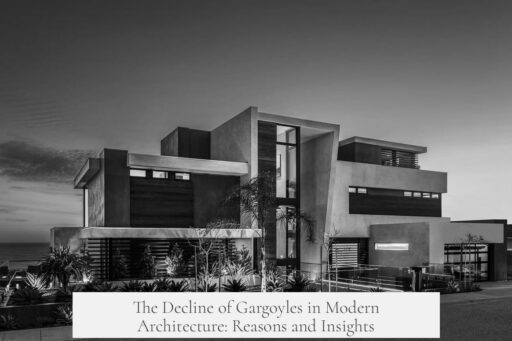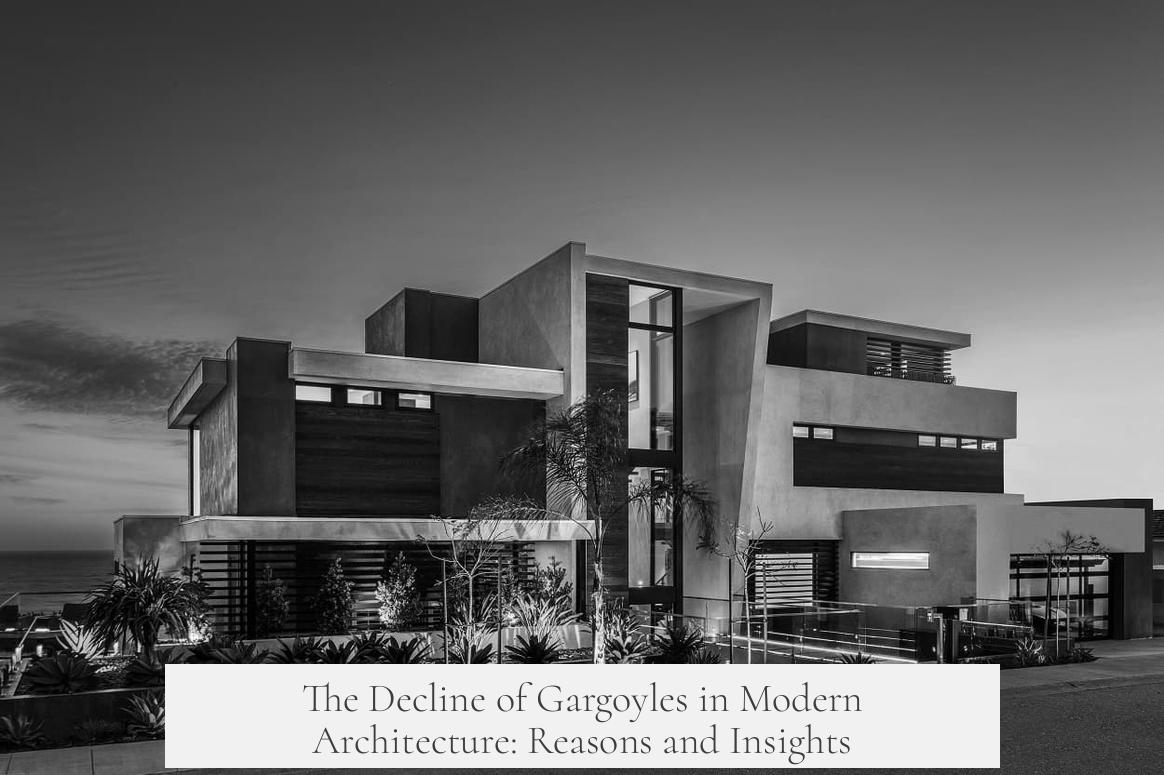The primary reason we stopped putting gargoyles on buildings is that they became obsolete due to advances in rainwater drainage technology and changes in architectural styles. Gargoyles were functional stone spouts designed to channel rainwater away from a building’s walls and roof. However, by the early 18th century, modern guttering and downpipe systems replaced them, offering a more practical, cheaper, and safer solution.
Gargoyles serve a clear practical role in architecture: they protect sensitive masonry from water damage. When rainwater collects on flat or lipped roofs, it threatens the integrity of structures by eroding ceilings and causing leaks. These stone spouts project water away from vulnerable areas, preventing the slow deterioration caused by constant water flow.
Historically, this method dates back thousands of years, appearing in ancient Egyptian and Greek architecture. Those civilizations used protruding water channels to divert rainwater safely off buildings. The approach continued through Roman architecture and became a hallmark of Romanesque and later Gothic styles in medieval Europe.
Beyond function, gargoyles held symbolic value. Their grotesque appearances were often inspired by mythological creatures, animals, or monstrous faces. Many designs reflected local pagan traditions and were believed to ward off evil spirits. Some legends describe gargoyles as protective demons mounted on churches to guard against unseen threats. This protective symbolism remained significant throughout medieval times.
Their visual presence, however, became less desirable over time. As Gothic architecture waned, tastes shifted toward simpler and more restrained aesthetics. The rise of Georgian architecture in the 18th century brought austere, utilitarian design principles that left no space for ornate or grotesque sculptures like gargoyles.
Practically speaking, gargoyles presented drawbacks:
- They were typically carved from heavy stone, making them expensive to produce and challenging to maintain.
- Constant exposure to water caused erosion and structural weakening, leading to various instances of falling gargoyles and safety concerns.
- Installing and repairing gargoyles required skilled craftsmanship, adding to long-term costs.
In contrast, by the early 1700s, buildings increasingly incorporated metal or ceramic gutter systems connected to downpipes. These channels efficiently directed water down and away from buildings, reducing maintenance issues and improving safety. Notably, the London Building Act of 1724 mandated downpipes for new construction, accelerating the decline of gargoyle usage in Britain.
As architectural styles evolved, the preference for clean lines and minimal ornamentation also curtailed gargoyles’ popularity. The elaborate and symbolic figures were out of step with the emerging modern design philosophies that favored function and simplicity without extra decoration.
Although gargoyles largely disappeared from everyday architectural practice, they never fully vanished. Occasional revivals occurred during the Art Deco period and among neo-Gothic restorations. Today, some universities and restored historic buildings feature them purely as ornamental elements, no longer serving their original drainage function.
However, gargoyles remain costly to create and maintain, and they are far less practical than current rainwater systems. Their survival in modern architecture mostly owes to aesthetic preference or homage to medieval styles rather than necessity.
| Factor | Impact on Gargoyle Use |
|---|---|
| Functional Purpose | Divert rainwater from roofs and walls to protect structural integrity |
| Material and Maintenance | Heavy stone carving was expensive and prone to weather erosion |
| Structural Safety | Erosion from water weakened some gargoyles causing dangerous falls |
| Technological Advances | Introduction of gutters and downpipes provided superior water management |
| Architectural Trends | Shift to minimalist Georgian styles excluded elaborate ornamentation |
| Cultural Perception | Growing association with pagan and “evil” symbolism reduced appeal |
In summary, gargoyles are a product of their time. They combined form and function to solve key architectural and cultural needs in ancient and medieval buildings. Modern technology, cost effectiveness, safety concerns, and changing aesthetic preferences led to their decline starting in the 18th century.
- Gargoyles originated to channel rainwater away and prevent building damage.
- Their heavy stone construction made them costly and vulnerable to erosion.
- Innovative gutters and downpipes replaced gargoyles by the 1700s.
- Georgian architecture’s simpler style excluded excessive ornamentation.
- Symbolic associations with paganism and superstition harmed their popularity.
- Modern gargoyles exist mainly as decorative, not functional, elements.
What practical function did gargoyles serve on buildings?
Gargoyles diverted rainwater from roofs to prevent damage. They protected masonry by channeling water away from walls, extending the life of buildings, especially in Gothic and Roman architecture.
Why did gargoyles become less common over time?
They were heavy and costly to carve and maintain. Water flow sometimes made them unstable. The rise of modern gutters and downpipes replaced their function, making them unnecessary.
How did architectural styles influence the decline of gargoyles?
Georgian architecture favored simple, practical designs. This style shift left no space for elaborate gargoyles, which were seen as too decorative or ostentatious for the era’s tastes.
Did cultural views affect the use of gargoyles?
Yes. Gargoyles often had pagan roots and were once thought to ward off evil. Over time, their frightening appearance gave rise to a reputation linked with evil, making them less popular.
Do gargoyles still appear on modern buildings?
They sometimes appear in neo-Gothic or revival architecture. However, they are mostly ornamental now and not used for water drainage, as modern systems do this more effectively.




